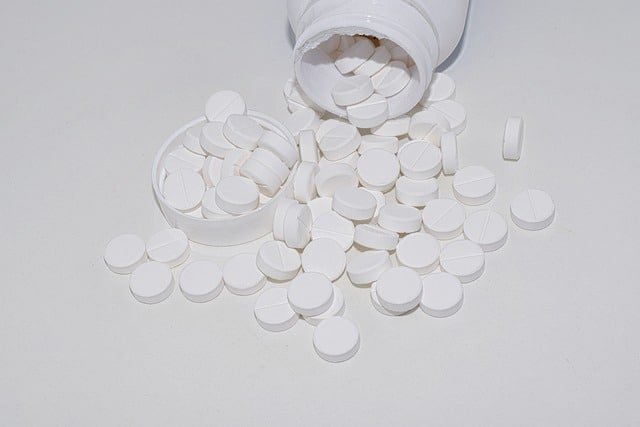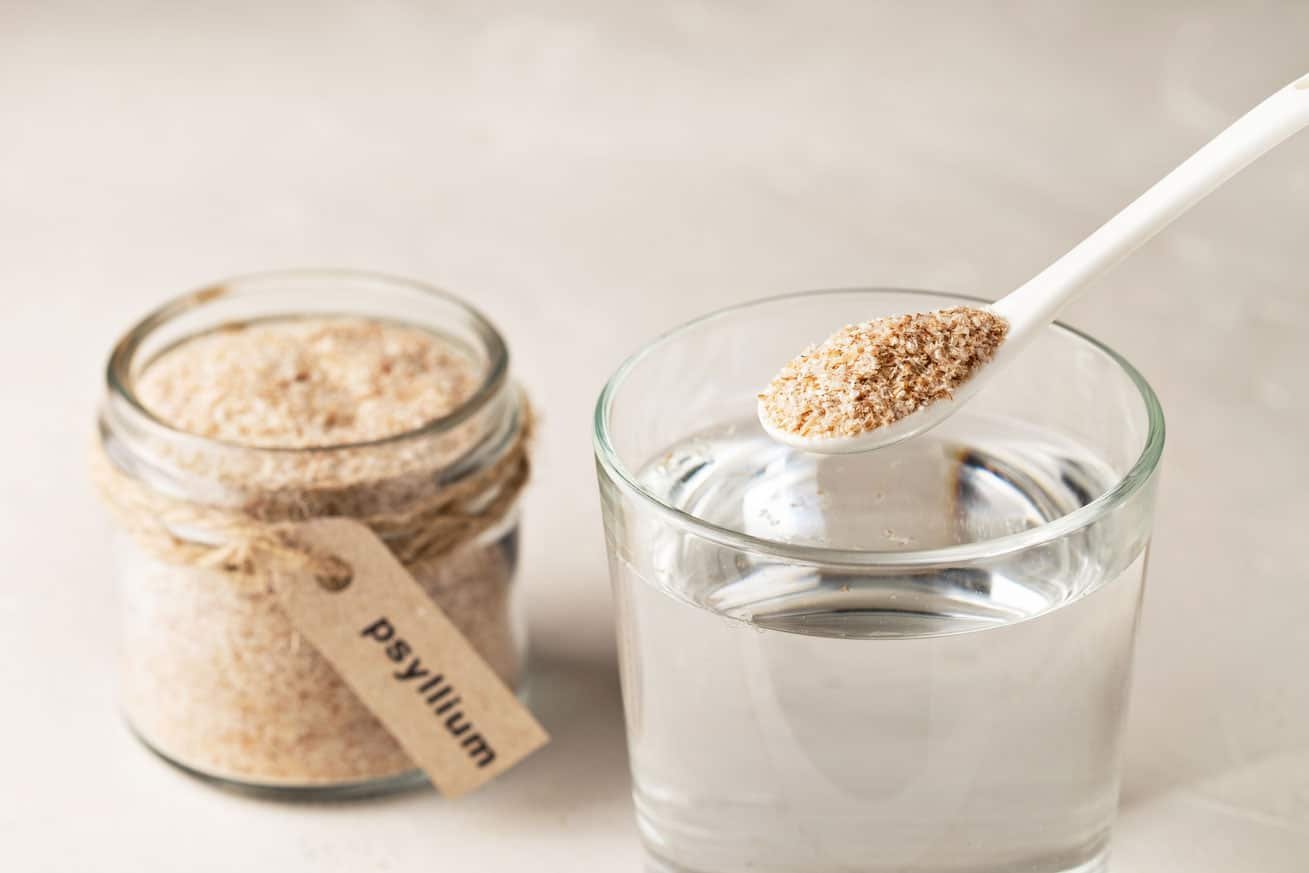In This Article
Introduction
Stretch marks often appear during pregnancy, weight gain, or growth spurts. While natural and harmless, some people might not like their appearance and want to reduce them. One popular solution is using natural oils. Let’s dive in and discuss Best Natural Oil for Stretch Marks
What are stretch marks?
Stretch marks, or striae, are long, narrow lines on the skin caused by rapid growth or stretching. They can appear anywhere but are most common on the stomach, thighs, hips, breasts, upper arms, and lower back. They start red or purple and fade to white or silvery streaks.
Why use natural oils for stretch marks?
People use natural oils for stretch marks because they’re safe, cheap, and easy to find. These oils have vitamins, fatty acids, and antioxidants that nourish and help the skin heal. Unlike some commercial products with harsh chemicals, natural oils have few to no side effects and suit all skin types.
Brief Overview of Stretch Marks and Their Causes
Stretch marks appear when the skin stretches quickly due to sudden weight changes or growth. This can happen during pregnancy, rapid weight gain or loss, and puberty growth spurts. The skin’s collagen and elastin break, causing these marks.
Importance of Natural Oils in Treating Stretch Marks
Natural oils treat stretch marks because they deep moisturize and nourish the skin. Oils like coconut, almond, and rosehip have essential fatty acids and vitamins that improve skin elasticity and repair damaged cells. Regular use of these oils can help reduce the appearance of stretch marks by promoting skin healing and keeping it hydrated.
Best Natural Oils for Stretch Marks
Now that we know why natural oils help reduce stretch marks, let’s look at some of the best options and how they work. Using these oils in your skincare routine can improve your skin’s elasticity, help it heal, and make it smoother and more even.
Skinception™ Intensive Stretch Mark Therapy
Skinception Intensive Stretch Mark Therapy fades, and even erases stretch marks on the stomach, breasts, upper arms, thighs and buttocks Within 45 days, Try Today Risk Free!
1. Coconut Oil
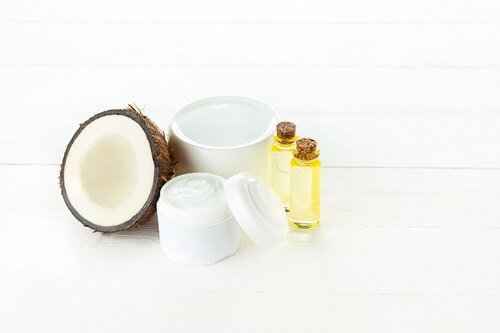
Coconut oil is a popular natural oil with many health benefits. It’s rich in fatty acids that nourish and protect your skin, making it great for healing stretch marks. It also has Vitamin E, which helps skin cell regeneration and collagen production.
- Benefits: Coconut oil is an excellent moisturiser that keeps your skin hydrated and smooth. It also possesses anti-inflammatory benefits that help decrease redness and irritation. Plus, it contains lauric acid, which has antibacterial properties to prevent infections.
- How to use: Apply coconut oil daily to your skin. Take a small amount and gently massage it into the affected areas in circular motions. This helps the oil penetrate deeply and provide maximum hydration. You can also mix coconut oil with essential oils for extra benefits.
2. Almond Oil
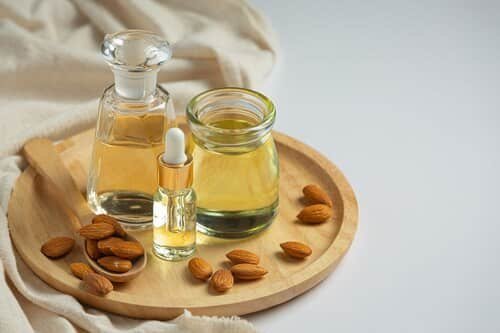
Almond oil is a great natural option for reducing stretch marks. It’s packed with Vitamin E, which helps improve skin elasticity and boost collagen production. It also has fatty acids and antioxidants that nourish and heal the skin.
Benefits
Rich in Vitamins E and K: Almond oil contains essential vitamins, especially E and K. Vitamin E is a potent antioxidant that fights free radicals, preventing premature aging and skin damage. Vitamin K helps reduce dark circles and maintains skin elasticity.
Improves Skin Elasticity: Using almond oil regularly can make your skin more elastic, keeping it firm and youthful. This reduces the chance of sagging and the appearance of fine lines and wrinkles. The nutrients in almond oil penetrate deep into the skin, nourishing and revitalizingzing it.
How to Use
Apply After Showering: The best time to use almond oil is right after you shower when your skin is still damp. This locks in moisture and helps the oil absorb better. Gently massage almond oil onto your skin in circular motions to boost blood circulation and promote deeper absorption.
Combine with Essential Oils: Mix almond oil with essential oils for a better skincare routine. Essential oils like lavender, chamomile, or tea tree oil can add extra benefits like soothing inflammation, calming the skin, or fighting acne. Mix a few drops of your chosen essential oil with almond oil and apply it to your skin for a personalised and effective treatment.
3. Olive Oil
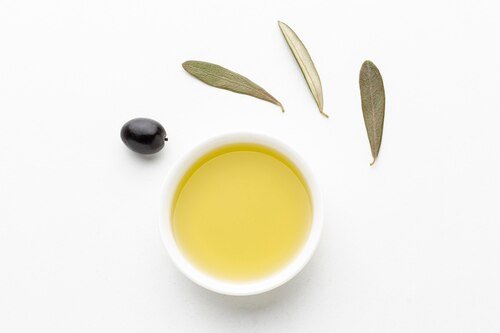
Olive oil is a well-loved natural oil with many health and beauty benefits. It’s packed with essential fatty acids, Vitamin E, and powerful antioxidants that nourish, protect, and repair the skin. People have used olive oil for centuries to improve skin health and reduce stretch marks, making it a timeless remedy.
Benefits
Moisturizes and Softens: Olive oil is a moisturiser that keeps your skin hydrated, smooth, and soft. It goes deep into the skin to provide lasting moisture, perfect for dry or flaky skin. Its properties help lock in moisture, keeping your skin supple and hydrated all day.
Anti-aging Properties: The antioxidants in olive oil fight free radicals that cause early aging. This makes it an excellent anti-aging ingredient for your daily skincare routine. It can help reduce fine lines, wrinkles, and other signs of aging, giving your skin a youthful glow and maintaining its elasticity.
How to Use
Mix with Sugar for Exfoliation: You can mix olive oil with sugar to make a homemade exfoliator. This helps remove dead skin cells, improve blood circulation, and promote healthy skin. Mix olive oil and sugar equally, then gently scrub onto damp skin before showering for smoother, more radiant skin.
Add to Bathwater: Add a few tablespoons of olive oil to your bathwater moisturizerize your skin while you relax. You can also add essential oils for extra benefits and a pleasant scent. This can create a spa-like home experience, enhancing physical and mental health.
4. Rosehip Oil

Rosehip oil is a popular natural oil for reducing stretch marks and improving overall skin health. It contains essential fatty acids, Vitamin A, and antioxidants that help rejuvenate and brighten the skin. People have used rosehip oil for centuries to improve their skin’s appearance, making it great for treating stretch marks.
Benefits
Boosts Skin Cell Regeneration: Rosehip oil has retinol (Vitamin A), which promotes cell turnover and regeneration. This helps repair damaged cells and reduce fine lines, scars, and stretch marks.
Brightens Skin Tone: The antioxidants in rosehip oil help fight dark spots and hyperpigmentation, making your skin look brighter and more even. Regular use can improve skin tone and texture, giving it a healthy, youthful glow.
How to Use
Apply Twice Daily: For best results, apply rosehip oil twice daily to the affected areas. Rub it softly into your skin until it is completely absorbed. This helps reduce stretch marks and other imperfections over time.
Mix with Carrier Oil: Rosehip oil is quite strong so that you can mix it with a carrier oil like coconut or almond oil. This helps the oil spread more evenly and penetrate deeper into the skin. Mix equal parts of rosehip oil with your chosen carrier oil and apply it to your skin in circular motions for maximum benefits.
5. Argan Oil

Argan oil is a natural oil that has been used for beauty treatments for a long time. It contains essential fatty acids and Vitamin E, making it a moisturiser and anti-aging ingredient. People use argan oil to treat skin issues like stretch marks because it’s so nourishing and healing.
Benefits:
- Contains Vitamins A and E: Argan oil has a lot of essential vitamins. Vitamin A helps make new skin cells and boosts collagen, which can reduce fine lines and wrinkles. Vitamin E is a potent antioxidant that protects skin from damage and helps heal.
- Improves Skin Hydration: Argan oil is a fantasmoisturizerizer because it’s rich in fatty acids like oleic and linoleic acid. These help lock in moisture, making skin feel softer and more hydrated. Using it regularly can improve your skin’s overall texture and moisture levels.
How to Use:
- Apply Directly: You can put argan oil directly on your skin. Just take a few drops and gently massage it into your face, neck, or any dry areas. It’s light and absorbs quickly, so it won’t leave your skin oily.
- Can Be Used During Pregnancy: Argan oil is safe to use when you’re pregnant. It can help prevent stretch marks by keeping your skin hydrated and elastic. Apply it to your belly, thighs, and breasts to help maintain skin elasticity and reduce the risk of stretch marks.
How to Pick the Right Oil for You
Every natural oil has benefits, so the best depends on your skin type and what you like. Some oils might be better for specific skin issues or have a smell you prefer. Researching and patch tests before using a new product on your skin is bright.
- For Dry Skin: Try almond or olive oil if your skin is dry because of moisturizers.
- For Oily Skin: If you have oily skin, lighter oils like argan oil are good because they won’t clog your pores or cause breakouts.
- For Anti-Aging: Rosehip oil is excellent for anti-aging since it contains Vitamin A and antioxidants.
- For Stretch Marks: All the oils mentioned are good for reducing stretch marks, so pick one that works best for your skin type and what you like.
Considering Your Skin Type
When choosing an oil, think about your skin type. For example, if you have oily skin, use lighter oils like jojoba or grapeseed oil, which won’t clog your pores. If you have dry skin, more decadent oils like argan or avocado can give you deep hydration. Knowing your skin type helps you pick oil to improve your skin.
Personal Preferences (Smell, Feel)
What you like also matters when picking an oil. Some people like oils with a pleasant smell, like lavender or rosehip oil, which can also help with aromatherapy. The oil’s feel is also essential; some might prefer light, fast-absorbing oils, while others like thicker, more nourishing oils. Choosing an oil you enjoy can make it easier to use regularly.
Allergies and Skin Sensitivities
Be aware of any allergies or skin sensitivities when choosing an oil. Regularly review the ingredient list for any possible allergens. For example, if you’re allergic to nuts, avoid nut-derived oils like almond oil. Also, do a patch test before entirely using a new oil in your skincare routine. This can help you avoid bad reactions and ensure the oil is good for your skin.
Additional Tips for Reducing Stretch Marks
- Moisturize Regularly: Keep your skin moist and elastic by applying lotion daily. Look for creams or oils with Vitamin E, cocoa butter, or hyaluronic acid. Apply right after a shower for best results when your skin is still damp. Natural ingredients like shea butter or almond oil are also great.
- Stay Hydrated: Drink lots of water to keep your skin healthy and stretchy. Strive to drink at least 8 glasses daily and consume hydrating foods such as watermelon, cucumbers, and oranges. Avoid too much caffeine and alcohol, which can dry out your skin.
- Eat Healthy and Exercise: A balanced diet with plenty of vitamins and minerals helps your skin stay firm. Foods rich in Vitamin C, Vitamin E, and zinc are great for skin health. Include lots of fruits, vegetables, nuts, and lean proteins. Regular exercise improves blood flow, which keeps skin healthy. Swimming, yoga, and strength training can help keep your skin elastic. Keeping a stable weight can also help prevent stretch marks.
Each oil has unique benefits and application methods, as described in the original text.
| Natural Oil | Key Benefits | How to Use |
|---|---|---|
| Coconut Oil | Rich in fatty acids and Vitamin E; moisturizes and has anti-inflammatory properties | Apply daily, massage in circular motions |
| Almond Oil | High in Vitamins E and K; improves skin elasticity | Apply after showering; can mix with essential oils |
| Olive Oil | Moisturizes, softens, has anti-aging properties | Mix with sugar for exfoliation; add to bathwater |
| Rosehip Oil | Boosts skin cell regeneration, brightens skin tone; rich in Vitamin A and antioxidants | Apply twice daily; can mix with carrier oils |
| Argan Oil | Contains Vitamins A and E, improves skin hydration; safe for use during pregnancy | Apply directly to skin; can be used twice daily |
Conclusion
Natural oils can help with stretch marks. They give your skin essential nutrients, make it more elastic, and help it heal. Using oils like coconut, almond, and jojoba in your skincare routine can make stretch marks look better and nourish your skin.
Remember, everyone’s skin is different. What suits one individual may not suit another. So, try different oils to see which one works best for you. Testing different oils helps find the best one for your skin type and the severity of your stretch marks.
In short, natural oils are good for managing stretch marks. Take your time to try different options and be patient, as results can vary for each person.
Researching and patch tests before using a new product on your skin is bright.
Frequently Asked Questions (FAQ)
1. What are the best natural oils for stretch marks?
The best natural oils for stretch marks include argan oil, rosehip oil, coconut oil, almond oil, and jojoba oil. Each of these oils has properties that help improve skin elasticity and hydrate the skin.
2. How often should I apply natural oils to reduce stretch marks?
For best results, apply natural oils twice daily, ideally in the morning and before bedtime. Consistent application is critical to seeing improvements in stretch mark appearance over time.
3. Can natural oils completely remove stretch marks?
While natural oils can significantly improve the appearance of stretch marks, they may not altogether remove them. These oils help to fade the marks, make the skin smoother, and improve its elasticity.
4. Is it safe to use natural oils during pregnancy?
Yes, most natural oils, such as argan oil, are safe during pregnancy. They can help keep the skin hydrated and reduce the risk of developing stretch marks. However, always do a patch test first to ensure you don’t have any adverse reactions.
5. How long does it take to see results from using natural oils on stretch marks?
Results can vary from person to person. Typically, you might notice improvements within a few weeks to a few months of regular application. Maintaining consistency is key to attaining optimal results.
6. Can I mix different natural oils for better results?
You can mix different natural oils to create a blend that suits your skin’s needs. For example, combining rosehip oil with argan oil can offer additional benefits due to their combined vitamins and antioxidants.
7. Are there any side effects of using natural oils on the skin?
Natural oils are generally safe, but some might experience allergic reactions or sensitivities. Always check the ingredient list and perform a patch test before applying the oil extensively.
8. Do I need moisturizerize in addition to using natural oils?
Natural oils can act as excellent moisturisers, but you can also use them regularly. Apply the oil first, then follow with your usual lotion or cream for additional hydration.
9. Can natural oils be used on other body parts besides where stretch marks are?
Natural oils are versatile and can be used on various body parts, including the face, hands, and feet, to provide hydration and nourishment.
10. Are there any specific dietary recommendations to complement natural oils?
A balanced vitamin C, E, and zinc-rich diet can complement natural oils. Foods like fruits, vegetables, nuts, and lean proteins support skin health and elasticity.
11. How do I store natural oils to maintain their effectiveness?
Store natural oils in a cool, dark place away from direct sunlight. Proper storage helps maintain their potency and extends their shelf life. Some oils, like rosehip, benefit from refrigeration.

Florence
Florence Delisy is a dedicated skincare and beauty expert with extensive industry experience. Certified in skincare and cosmetology from University of the Arts London, she specializes in personalized skincare routines, anti-aging treatments, and beauty consultations. Florence is committed to helping clients achieve healthy, radiant skin through tailored solutions and education on effective skincare practices.




